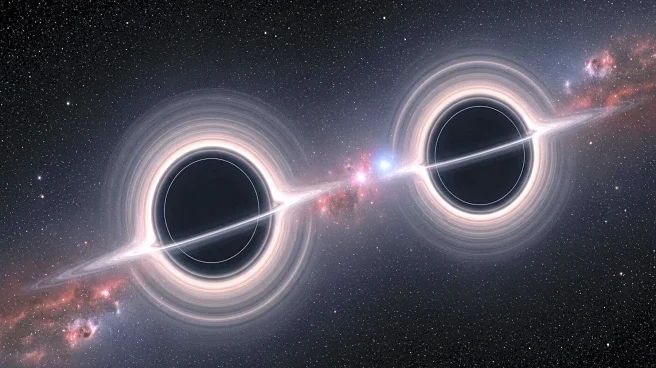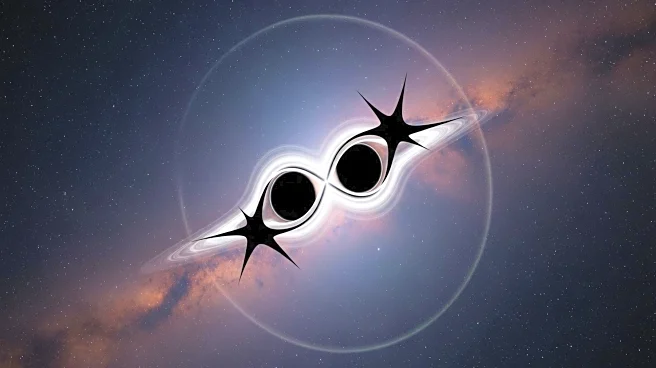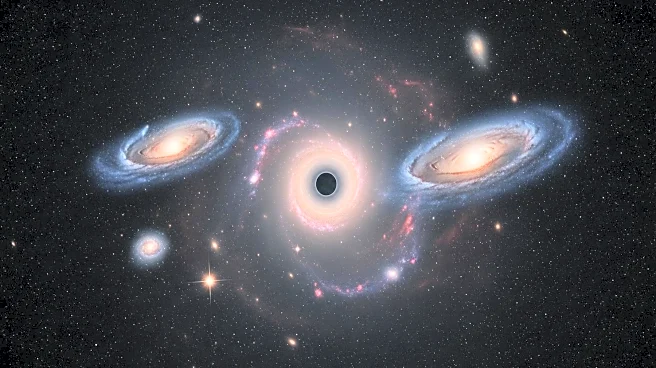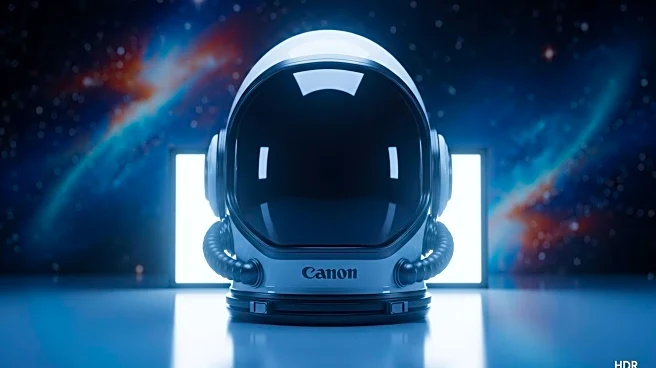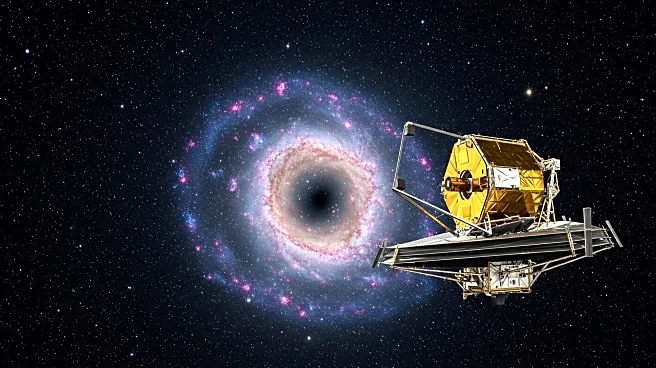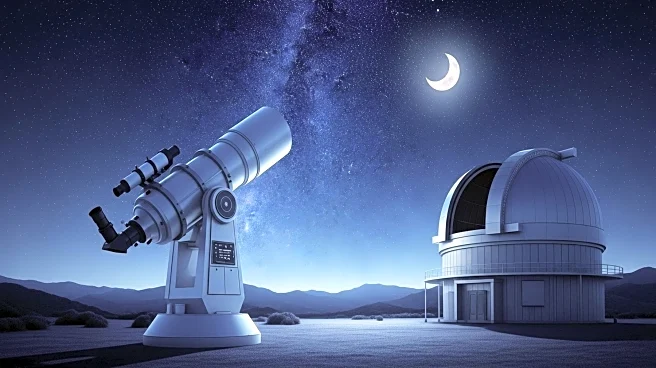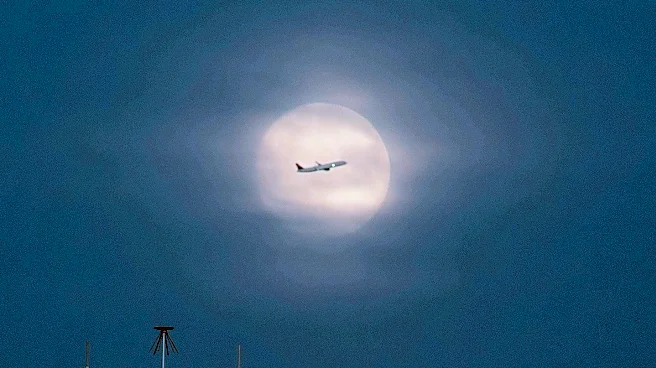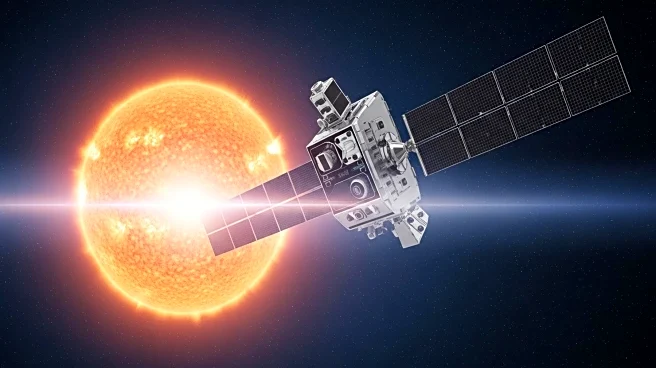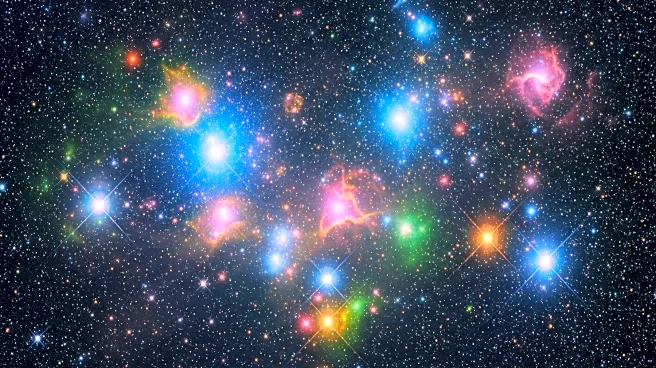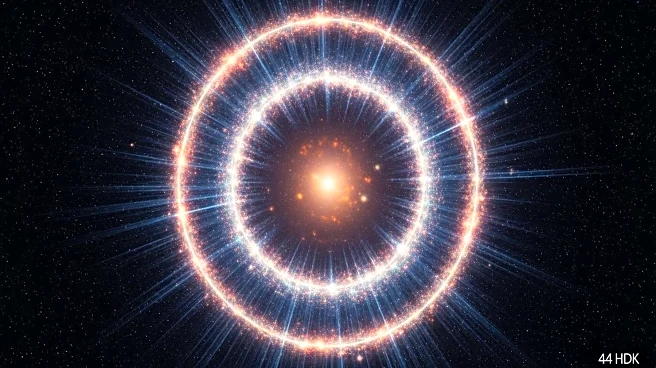What's Happening?
Astronomers have successfully captured the first-ever image of two black holes orbiting each other, providing visual proof of black hole pairs. The discovery was made through radio light fluctuations captured by telescopes both on Earth and in space, revealing the black holes locked in a 12-year orbit approximately 5 billion light-years away. The larger black hole, known as the blazar OJ287, is a supermassive entity with a mass 18 billion times greater than the sun. The smaller black hole emits a jet of near-light speed particles. This groundbreaking image was published in The Astrophysical Journal, marking a significant milestone in astrophysics.
Why It's Important?
This discovery is crucial as it provides direct visual evidence of black hole pairs, which have been theorized but not previously observed. The ability to image these pairs enhances our understanding of black hole dynamics and the extreme environments they create. It also supports existing theories about active galactic nuclei and quasars, which are among the most luminous objects in the universe. The findings could lead to further insights into the formation and evolution of galaxies, as black holes play a significant role in these processes. This advancement in imaging technology may pave the way for more detailed studies of cosmic phenomena.
What's Next?
Future observations with improved resolution could further verify the presence of two distinct jets, confirming the orbiting pair hypothesis. Continued advancements in telescope technology, such as those used in this discovery, will likely lead to more detailed observations of black hole interactions. Researchers may focus on identifying more black hole pairs and studying their impact on surrounding cosmic structures. This could lead to a deeper understanding of gravitational waves and their sources, potentially influencing future astrophysical research and exploration.
Beyond the Headlines
The ability to image black hole pairs opens new avenues for exploring the universe's most extreme environments. It raises questions about the nature of space-time and the role of black holes in cosmic evolution. Ethical considerations may arise regarding the allocation of resources for such high-cost scientific endeavors, balancing the pursuit of knowledge with practical applications. The cultural impact of these discoveries could inspire future generations to engage in scientific exploration and innovation.

